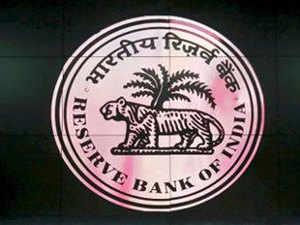ET Bureau|
Feb 12, 2018, 11.43 PM IST

MUMBAI: The Reserve Bank of India has scrapped numerous loan restructuring programmes prevalent among banks to restructure defaulted loans and made resolution of defaults time bound with the Insolvency and Bankruptcy Code becoming the main tool to deal with defaulters.
The central bank has warned banks of monetary penalties and higher provisions if banks are found to have violated or found `evergreening' accounts to escape its stringent new norms on fixing defaults.
Almost all the schemes such as the Corporate Debt Restructuring, Sustainable Structuring of Stressed Assets or S4A, Strategic Debt Restructuring, and Flexible Structuring of Existing Long Term Project Loans stand abolished. The Joint Lenders Forum designed to resolve potential bad debts has also been disbanded.
``Any failure on the part of lenders in meeting the prescribed timelines or any actions by lenders with an intent to conceal the actual status of accounts or evergreen the stressed accounts, will be subjected to stringent supervisory, enforcement actions,'' the RBI said in a notification. That included, ``but not limited to, higher provisioning on such accounts and monetary penalties.''
The central bank's action comes after a series of directions from it to banks to try the big defaulters under the bankruptcy laws enacted in 2016. While banks were still getting used to the new law, the many restructuring plans that were in force for years were continuing. Now that the bankruptcy process appears to be stabilising, the regulator has found it apt to scrap the schemes which mostly were misused or seen not sophisticated.
The central bank has also toughened the reporting of defaults to the central repository by making it monthly from quarterly. All borrower entities in default with an exposure of more than Rs. 5 crores have to be reported on weekly basis.
It also mandated that banks act quickly to resolve the big defaults. It said banks have to come together to work out a resolution plan as soon as a default happens and if not done within 180 days, the account should be referred to the bankruptcy courts.
``As soon as there is a default in the borrower entity's account with any lender, all lenders - singly or jointly - shall initiate steps to cure the default,'' said RBI. ``The resolution plan (RP) may involve any actions, plans, reorganization including, but not limited to, regularisation of the account by payment of all over dues by the borrower entity, sale of the exposures to other entities, investors, change in ownership, or restructuring.''
For companies that are in default above Rs. 2,000 crores, the resolution plan has to be implemented within 180 days from March 1. For defaults after that date, it has to be done within 180 days from the day of default.
``For other accounts with aggregate exposure of the lenders below Rs. 2,000 crores and, at or above Rs. 100 croers, the Reserve Bank intends to announce, over a two-year period, reference dates for implementing the RP to ensure calibrated, time-bound resolution of all such accounts in default,'' it said.
No comments:
Post a Comment